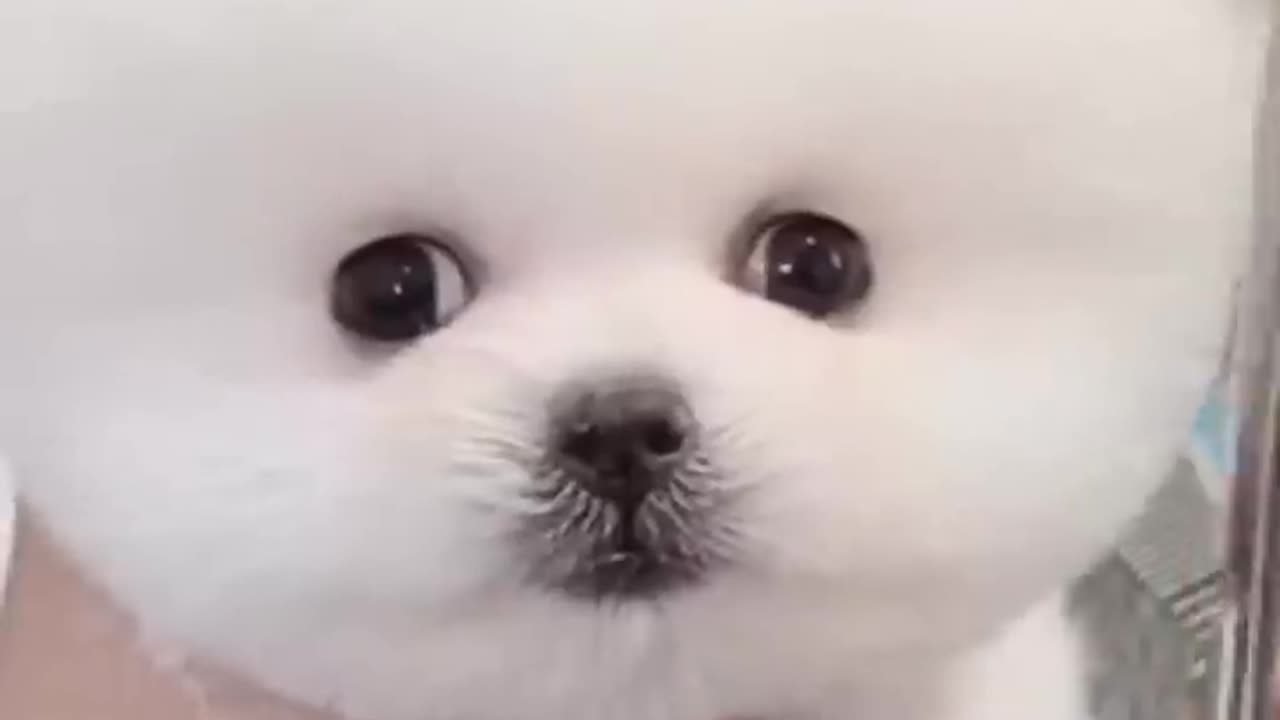Premium Only Content

cute puppy playing || so cute || like for more videos .
History of pets :
pet, any animal kept by human beings as a source of companionship and pleasure.
While a pet is generally kept for the pleasure that it can give to its owner, often, especially with horses, dogs, and cats, as well as with some other domesticated animals, this pleasure appears to be mutual. Thus, pet keeping can be described as a symbiotic relationship, one that benefits both animals and human beings. As the keeping of pets has been practiced from prehistoric times to the present and as pets are found in nearly every culture and society, pet keeping apparently satisfies a deep, universal human need.
The history of pets is intertwined with the process of animal domestication, and it is likely that the dog, as the first domesticated species, was also the first pet. Perhaps the initial steps toward domestication were taken largely through the widespread human practice of making pets of captured young wild animals. Eventually, a working relationship developed between the dogs and their human captors. The dog was swifter, had stronger jaws, and was better at tracking prey; therefore, it could be of great use in hunting and guarding duties. From human beings, on the other hand, the dogs were assured of a constant supply of food as well as warmth from the fire. There is indirect evidence that the dog may have been domesticated and kept as a pet since Paleolithic times, as can be surmised from the paintings and carvings that archaeologists have found in ancient campsites and tombs. In Mesopotamia, dogs that look remarkably like the present-day mastiff were shown participating in a lion hunt. Domestic pets were often depicted in the scenes of family life in ancient Egypt; hunting dogs of the greyhound or saluki type accompany their master to the chase, and lap dogs frequently sit under the chair of their master or mistress.
Next to the dog, horses and cats are the animals most intimately associated with human beings. Surprisingly, both these animal groups were domesticated rather late in human history. There is no evidence that horses were domesticated in Paleolithic or Mesolithic times, but by about 2000 BCE horses used in chariot battles were an established phenomenon throughout the Middle East. It seems that riding astride horses was a practice developed a few centuries later (see horsemanship). The cat too does not seem to have been domesticated as a pet until the New Kingdom period (about the 16th century BCE) in Egypt. This is all the more strange as the ancient Egyptians had tamed many types of animals, such as lions, hyenas, monkeys, the Nile goose, and dogs, since the Old Kingdom period. But once cats were finally domesticated, their popularity was enormous. Gradually, the cat became one of the most universally worshiped animals.
As has been noted, the primary bond distinguishing a pet-and-owner relationship is affection. As useful as many of these animals are, what differentiates a pet from other economically useful livestock is the degree of contact between the animals and human beings. Often, this relationship has been unabashedly sentimentalized in myth, art, and literature. The affection between Alexander the Great and his favourite horse, Bucephalus, has become legendary, while in the modern age the popularity of such canine motion-picture stars as Rin Tin Tin and Lassie is further evidence of the importance placed on the relationship between owner and pet.
The pet-and-owner relationship, however, is not only founded on companionship; since the earliest period of domestication, pets have fulfilled practical, economic ends. Catching other animals to feed their human masters is one of the most fundamental uses of pets, and not only dogs have served in this capacity but cats, hyenas, and lions have also been used for hunting. The aristocratic, rather arcane sport of falconry made use of the natural talent of hawks to aid in hunting game birds. Pets have also been used for the purpose of guarding—either other livestock, the home or territory of their owners, or the owners themselves. Any pet that has a sharp sense of smell or hearing and that makes a loud noise when aroused can be used as a guard, although dogs are the best-known examples. It is thought that the Nile goose, a favourite household pet of the ancient Egyptians, may have served such a purpose. The herding and guarding of livestock is another practical use of pets, in particular the dog. Over the centuries, many specialized breeds of dog have been developed to suit this purpose.
#like #cute #dog #puppy #love #funny
-
 LIVE
LIVE
vivafrei
2 hours agoGuest "Misfit Patriot" on Andrew Tate & Casey Anthony! Canada Goes Full Trade War! ACB = DEI?
2,847 watching -
 LIVE
LIVE
The Charlie Kirk Show
1 hour agoCharlie vs. Gavin Newsom | Jonathan "Lomez" Keeperman | 3.6.25
7,898 watching -
 LIVE
LIVE
Simply Bitcoin
1 hour agoCould The NEXT 24 Hours Change The 2025 Bitcoin Bull Market? | EP 1197
284 watching -
 49:57
49:57
The Dan Bongino Show
4 hours agoAnother Phony Narrative Crumbles + First Show In The New Studio! (Ep. 2437) - 03/06/2025
498K1.3K -
 44:26
44:26
The Rubin Report
2 hours ago'Real Time' Crowd Stunned by Bill Maher’s Unexpected Glaring Blind Spot
22.9K32 -

Benny Johnson
2 hours agoDeep State PURGE: CIA Agents STRIPPED of Badges as Trump DISMANTLES Dept of Education | Dem CENSURED
43.3K61 -
 55:56
55:56
Grant Stinchfield
1 hour agoWhat Happened to the Mystery Drones? They Don't Just Disappear, or do They?
1.41K -
 LIVE
LIVE
Flyover Conservatives
12 hours agoThe Medical Industry’s Dark Secret—What They Don’t Want Pregnant Women to Know! - Dr. James Thorp | FOC Show
811 watching -
 1:01:32
1:01:32
Standpoint with Gabe Groisman
2 days agoThe War on Israel: Yair Netanyahu Tells All
16.6K5 -
 2:10:19
2:10:19
Steven Crowder
4 hours agoTrump Loves Dictators: Debunking the Left’s Latest Attack Strategy
306K222